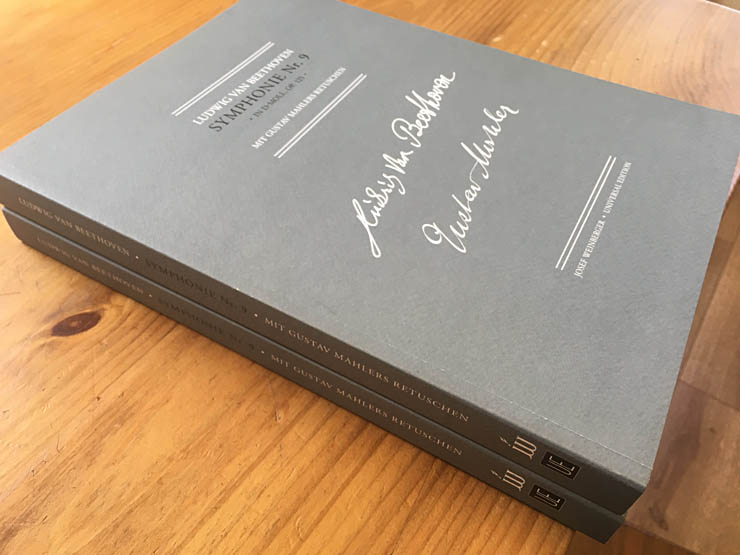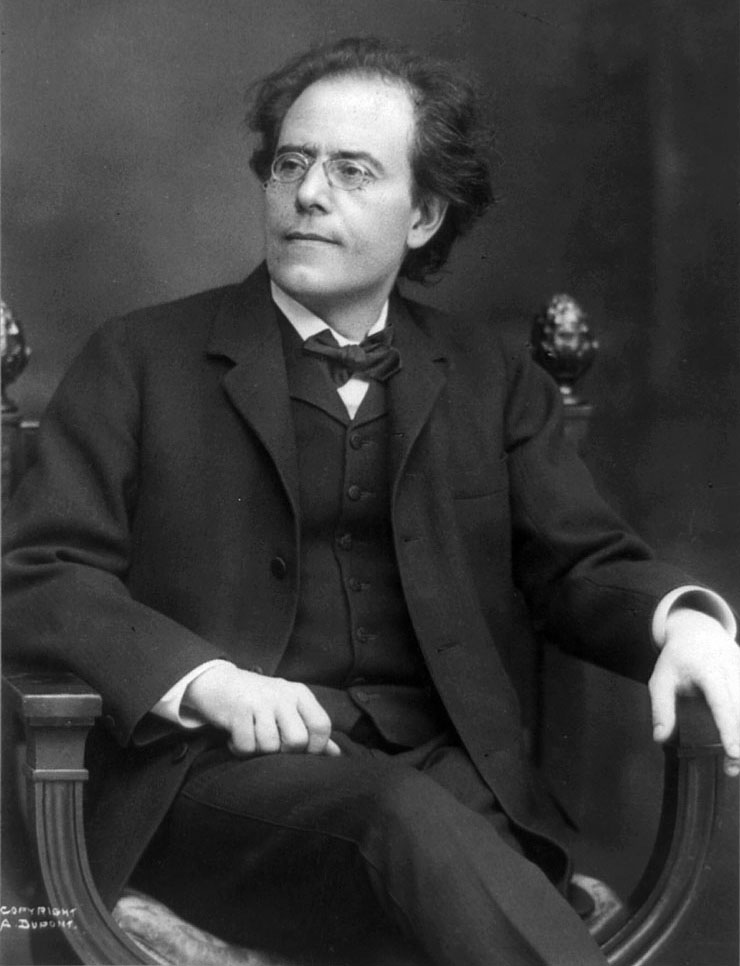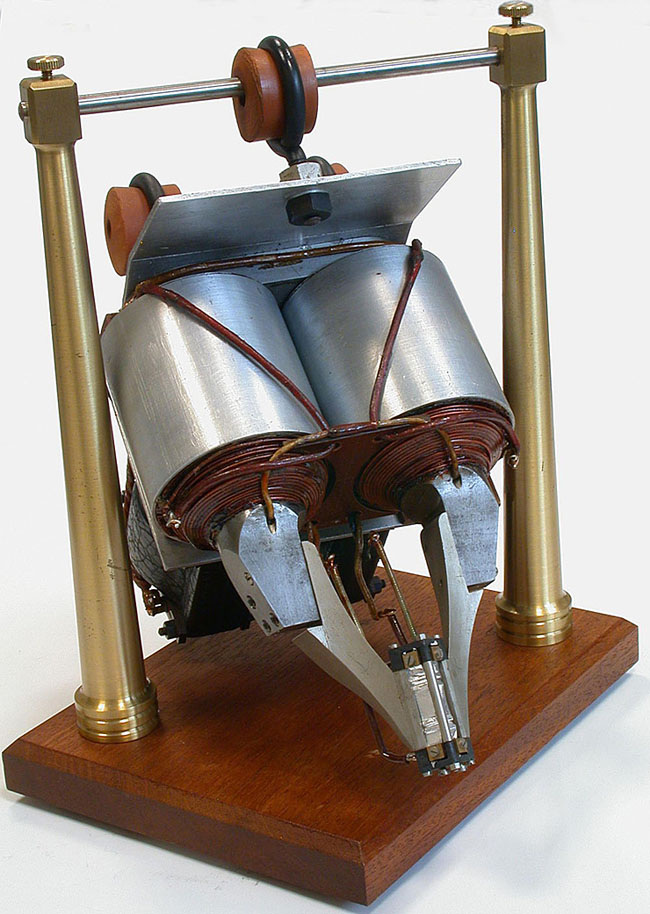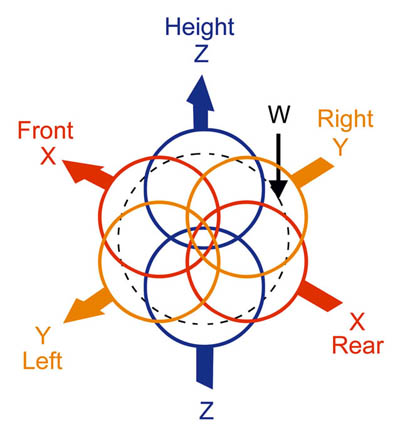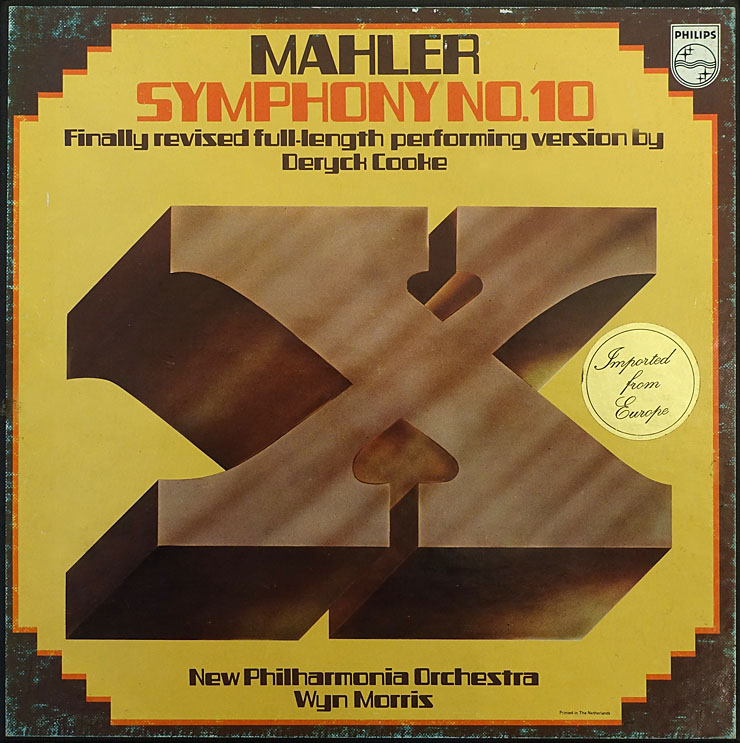Gustav Mahler conducted Beethoven’s Ninth Symphony on ten occasions: in Prague, Hamburg, Vienna, Strassburg and New York. For the last seven of these performances he prepared and used his own score and orchestral parts. I have transcribed and edited these materials...
Gustav Mahler & Beethoven’s Ninth Symphony
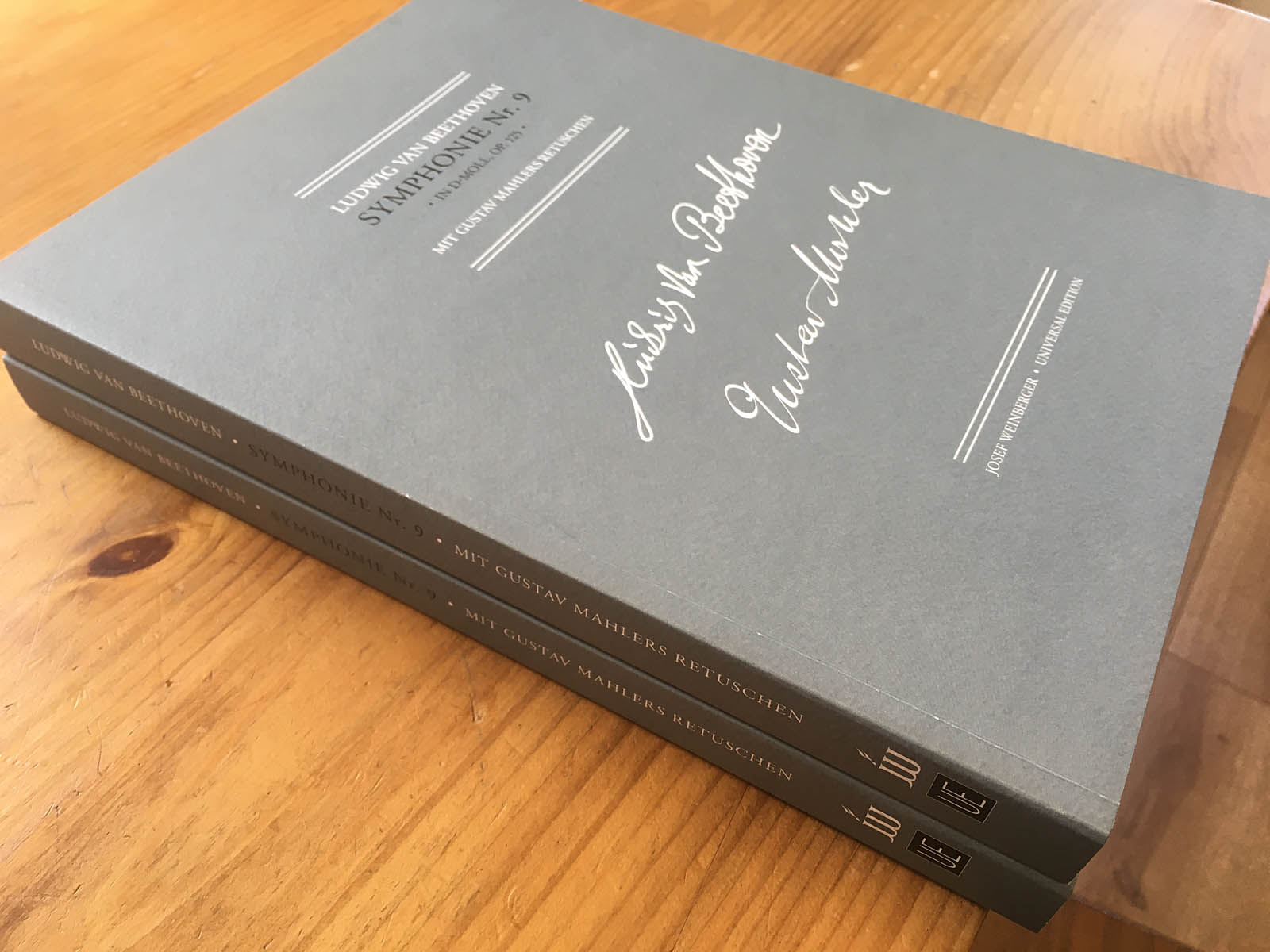
Gustav Mahler conducted Beethoven’s Ninth Symphony on ten occasions: in Prague, Hamburg, Vienna, Strassburg and New York. For the last seven of these performances he prepared and used his own score and orchestral parts. I have transcribed and edited these materials and they have been used in many performances in recent times. A study score of this edition has now been published by Josef Weinberger Ltd. in collaboration with Universal Edition A.G. The sources that were consulted for this edition are listed and described in detail in the Preface and Critical Report included with the score together with characteristic illustrations of Mahler's materials. The score is identified as ISMN 9790570056897.
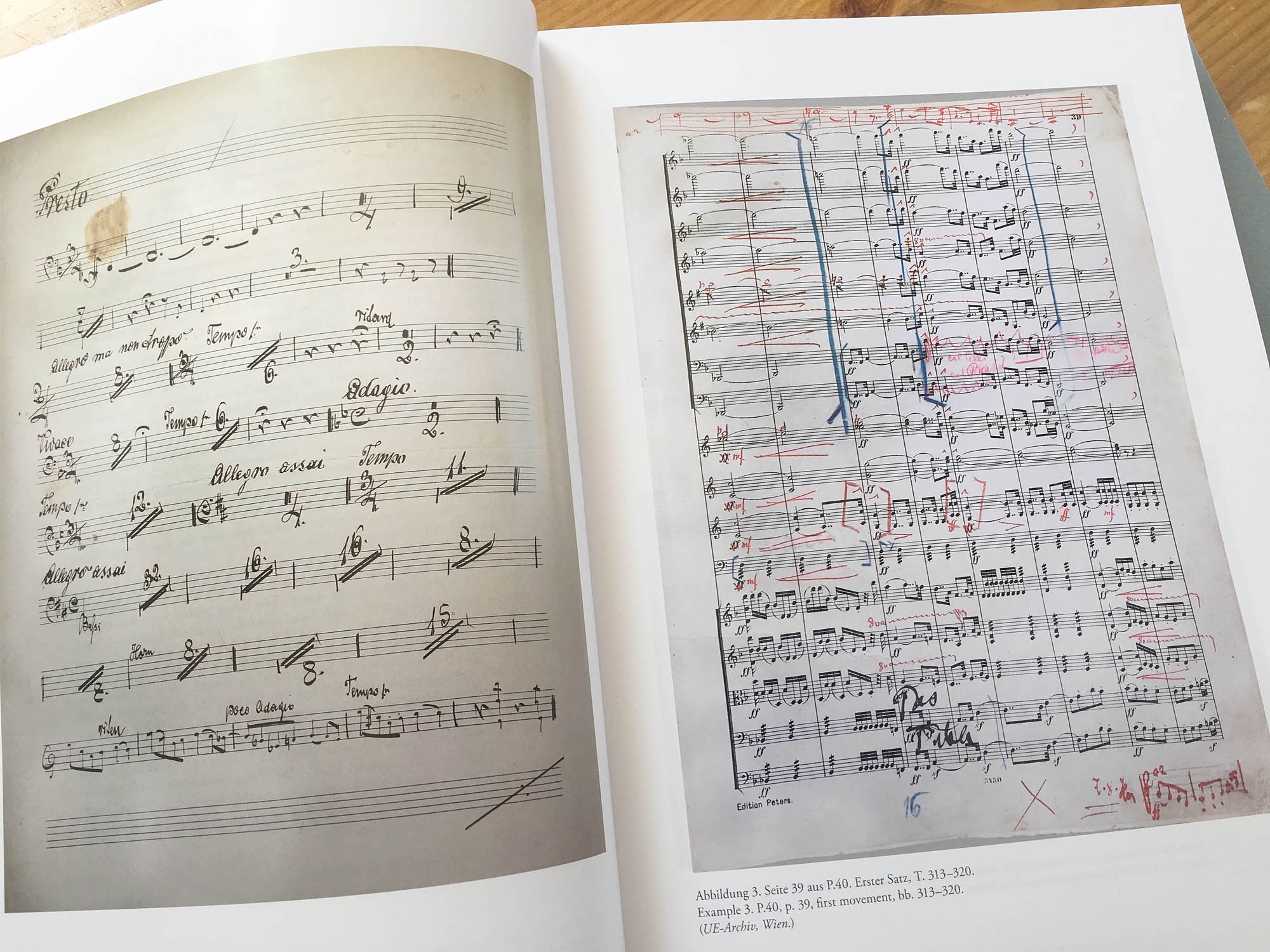
Facsimile reproductions of Mahler’s tuba part and Vienna score

The Weinberger edition of the above facsimile score page
Mahler’s Hamburg Score
The first of the performances for which we have definite evidence of Mahler’s changes to Beethoven’s instrumentation is that which took place in Hamburg in 1895. The score that Mahler prepared for this performance still exists. The changes are largely entered in lead pencil and they are not easy to decipher. No set of orchestral parts has been found that matches this score.
Mahler uses the E-flat clarinet extensively in his Hamburg score, even employing two of them at one point in the first movement; and at the beginning of the Alla Marcia section of the Finale we find the instructions for the participation of an offstage band. Several of Mahler’s contemporaries, including Bruno Walter, wrote in their memoires that this was employed in the 1895 concert. Other selected features of this score are described in the Editor’s Report of the edition. While of great interest, for various reasons the Hamburg score cannot be regarded as anything more than an interim solution to the problems that Mahler perceived in the instrumentation of the symphony. He subsequently abandoned the offstage band as an unsuccessful experiment, and it is clear that the small number of additional instruments available to him in Hamburg caused him to make compromises that he later rejected. Apart from the E-flat clarinets, one of these is the frequent use of the trumpets to rectify balance problems.
Mahler’s Viennese Score and Orchestral Parts
Mahler marked up a new score of the Ninth Symphony for his first Viennese performance and a set of orchestral parts was prepared for him by a professional copyist. He used these materials for all his subsequent performances, making further changes as he went along and sometimes writing these into the parts himself. One can see clearly the hand of the librarian of the New York Philharmonic in the parts. In addition to selectively doubled woodwind voices, Mahler requires eight horns, four trumpets, and occasionally a tuba and second timpanist.
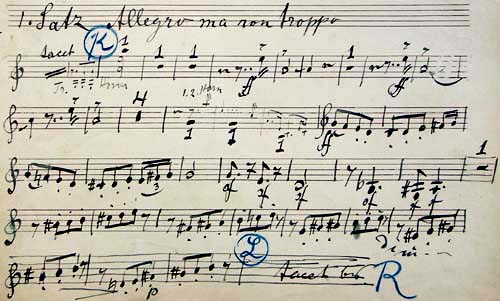
Mahler’s autograph addition to his 7th Horn part. Reproduced by courtesy of Universal Edition.
The Edition
My edition is based on the Viennese score and parts, whereby occasional discrepancies between them had to be resolved. These are fully discussed in the Critical Report. There are no additions from the Hamburg score.
The Gabrilowitsch Copy
In 1923, Ossip Gabrilowitsch, then Music Director of the Detroit Symphony Orchestra, was given permission by Alma Mahler to copy Mahler’s score and have orchestral parts made for his own use. This score and parts, made by an unknown copyist, contain not only Mahler’s Retuschen, but also additional changes that appear to have been made at the behest of Gabrilowitsch himself. These, which include the participation of the violas in the cello/bass recitatives at the beginning of the Finale and extra entries of the trombones and tuba, substantially reduce the authority of this source, rendering it of no value for the establishment of the Weinberger critical edition. These materials have been used in concert many times and recorded in recent years, so that unfortunately many people have the erroneous impression that all the Retuschen in them are authentic.
Rev. 3 Dec 2018

